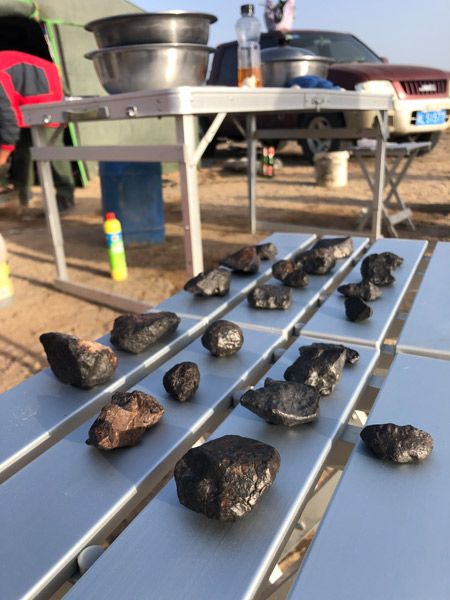 |
|
Yang and her teammates spend a night in a tent during an expedition to Xinjiang in November 2020. They found a total of 23 meteorites during the trip. [Photo provided to China Daily] |
Gaining survival skills
In 2012, Yang had a close call during her first trip hunting meteorites in Lop Nur, a former salt lake in Xinjiang.
"I had no experience in no man's land, and was concentrating on scanning the ground (for meteorites), without noticing I was distancing myself from the team," recounts Yang.
"I panicked. I could not see anyone from my team in the seemingly boundless Gobi desert."
It was the first time she felt desperation and was fearful for her life, she says. Fortunately, she found the tire tracks of the vehicles and hiked for more than three hours before she spotted a headlight.
"I screamed and waved, and my friends found me," she recalls.
She has since then made a point of learning survival skills for every imaginable contingency, such as sudden sandstorms or if the car gets stuck in the desert sand.
After years of research and study, Yang's meteorite tracking skills have blossomed.
"The fresh ones just falling from the sky will often carry a thin black shell, while those weathered by the wind will have a touch of brown mixed into them," Yang says. "You can just tell after spending time looking for them."
The biggest meteorite she found was at Alatage Mountain in Xinjiang. It weighed more than 30 kilograms and is believed to have fallen to Earth more than 100 years ago.
But finding one is only half the battle. Once Yang locates a meteorite, she has to make notes of coordinates and measure its weight, before searching for more pieces that may have broken up as the rock plummeted.
"You can't miss even one of just a few grams," Yang says, adding that they could be part of a whole piece and help determine the trajectory.
She spent two years from 2013 recovering more than 200 meteorites that belong to the same larger rock in Ruoqiang county, Xinjiang.